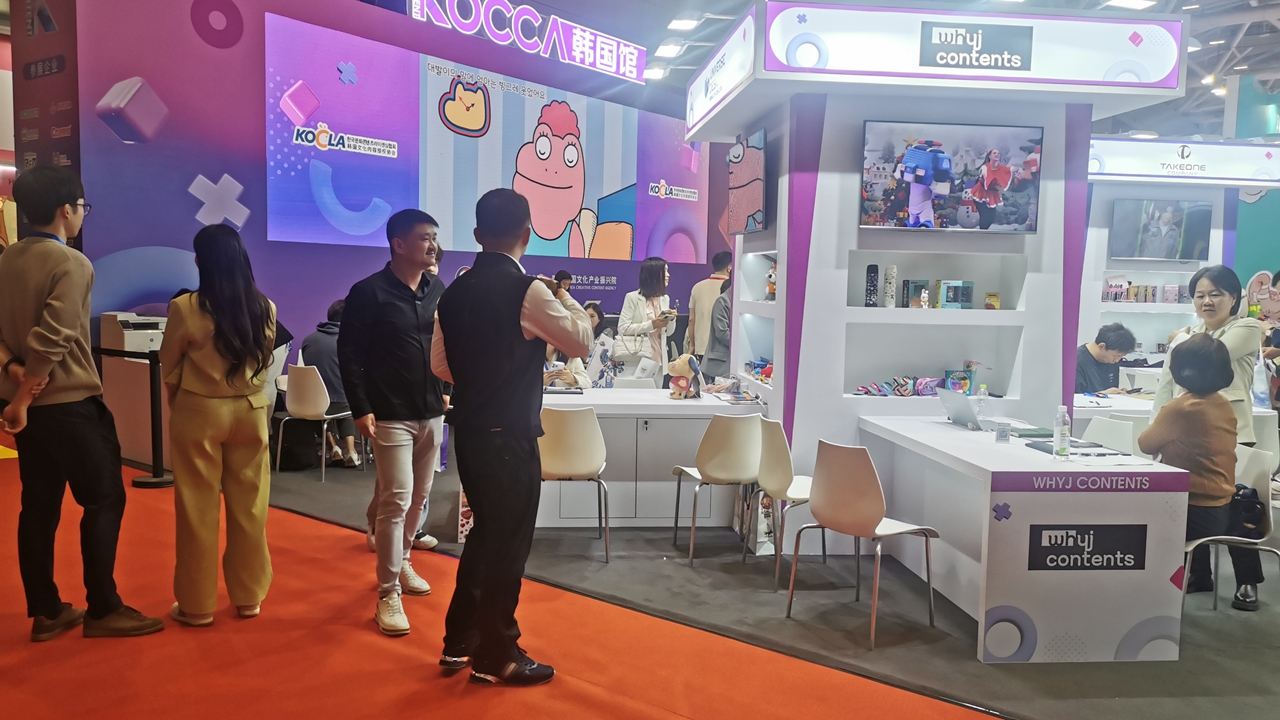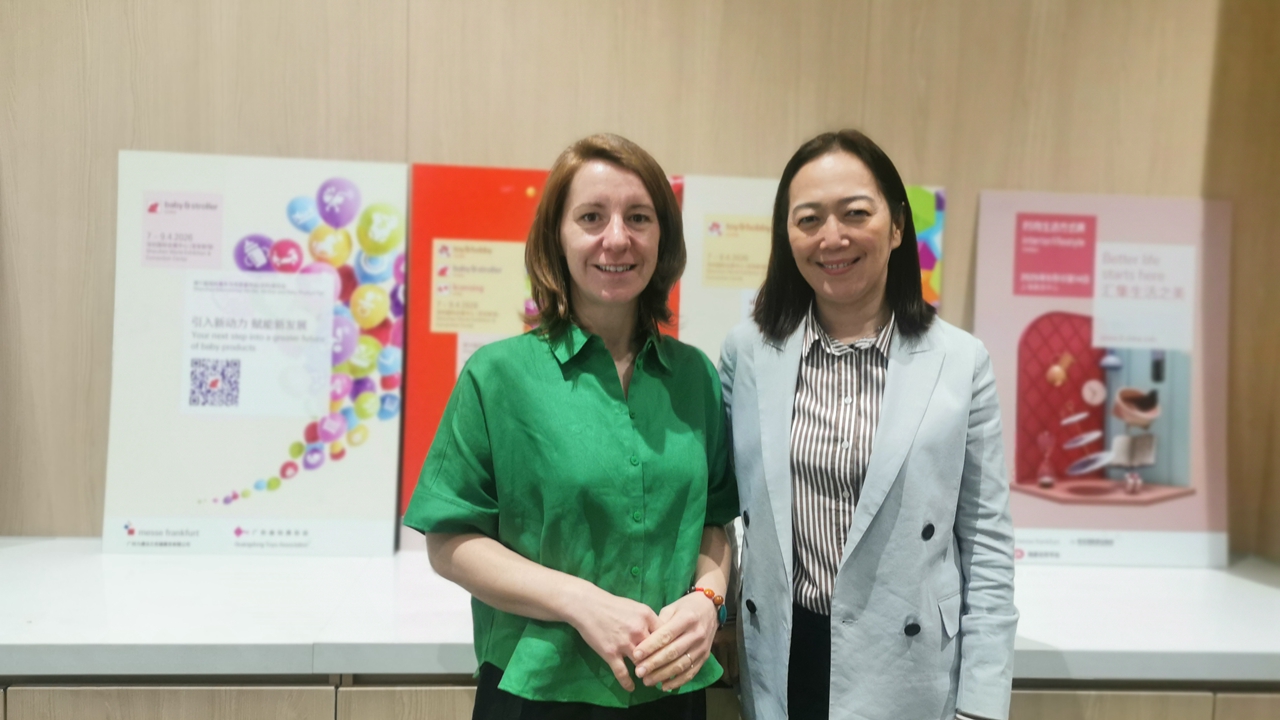Execs upbeat about toy industry despite US tariffs
Writer: Debra Li | Editor: Lin Qiuying | From: Original | Updated: 2025-04-09
Despite the headwind of an additional 34% tariff imposed on all Chinese exports to the United States, Julia Uherek, vice president of Messe Frankfurt’s consumer goods fairs, remains optimistic about the future of the toy industry in China.
“The tariffs will impact world trade, for sure, and there will be differences going forward,” Uherek told Shenzhen Daily on Monday during the three-in-one trade fairs for toys, baby products, and IP exchange held in Bao’an District. “However, for the toy industry, of which China is a major hub, the impact of the tariffs may be mitigated by low electricity costs, supply chain innovations, and new opportunities arising from emerging markets and partnerships,” she noted.
Covering 130,000 square meters of exhibition space in five halls at the Shenzhen World Exhibition and Convention Center, the Toy and Hobby China, Baby and Stroller China, and Licensing China fairs are showcasing a wide array of toys, baby and maternity products, as well as licensed goods from 2,100 brands represented by over 1,400 exhibitors.
With China’s unparalleled production capacity leading to competitive unit costs, Chinese exports currently account for 76% of all toys (excluding games) imported into the U.S.
“As toys are high-margin products, especially branded ones, manufacturers don’t need to drastically hike prices,” she said, adding that end consumers, often loyal to certain brands, are willing to pay higher prices for their hobbies.

Cosplayers strike a pose for photos at the Toy and Hobby China fair in Bao'an District on Monday. Photos by Li Dan
The bustling crowds observed on the first day of the three-day event supported Uherek’s assessment. Guo, a young computer engineer in his late 20s, took half a day off on Monday to visit the fairs. By the time he left at 4:30 p.m., he was carrying four large boxes of bespoke animation figures from Moshow Toys, each costing around 800 yuan (US$109.2).
“Compared to Japanese-made products, these domestic figures are more cost-effective and of very high quality,” he said, adding that he purchased the toys for himself and had no intention of reselling them online.
As part of the rebranded Toy and Hobby China (formerly Toy and Edu China) fair, Hall 14 features a new Trendy Toys and Collectibles zone exhibiting designer toys, blind boxes, garage kit figures, ball-jointed dolls, cotton dolls, and other trendy toys suitable for all ages.
“The market for collectibles and trendy toys — a trend that began in Asia — is enormous in China and Japan, and is spreading to Europe and the U.S.,” Uherek noted. “We previously had collectible Pokémon cards in Europe, but these products are now gaining a growing fan base among ‘kidults.’”
She added that Chinese manufacturers can certainly focus on developing collectibles, perhaps modeled on licensed characters from Marvel or Disney. Statista predicts the consumer base for collectible toys will expand to 49 million by 2030.

The Korea Creative Content Agency’s booth is a highlight at the Licensing China fair.
The Licensing China fair has expanded approximately fivefold in size since 2019, according to Wendy Wen, managing director of Messe Frankfurt (HK) Ltd., which co-organizes the event.
Moreover, older adults have become another focus group for the toy industry, as they also seek toys to stay mentally active.
The significant opportunity for the toy industry lies in technological advancements, as experts shared their insights on future trends at the “World of Play” summit held alongside the fairs. “Smart toys are a hot topic, and artificial intelligence presents massive opportunities for manufacturers to develop new sorts of toys,” Uherek explained.
Wen affirmed that an increasing number of “phygital” toys exemplify the trend of digital integration in toys. “Toy and baby brands are also innovating with recycled materials, circular models, and eco-certifications, as sustainability is a high priority for many countries,” she added.

Julia Uherek (L), vice president of Messe Frankfurt’s consumer goods fairs, and Wendy Wen, managing director of Messe Frankfurt (HK) Ltd.
Messe Frankfurt relocated the fairs from Guangzhou to Shenzhen in 2020 due to the city’s “geographical advantages and international accessibility at the heart of the Guangdong-Hong Kong-Macao Greater Bay Area,” according to Wen.
This year, event organizers also arranged a free one-day tour along two routes for visitors to explore either Eastcolight’s Zhongshan toy factory or Chinese licensor B.Duck’s Shenzhen office, in addition to a toy retail outlet in Shenzhen. “About 50 people have signed up for the tour,” Wen mentioned.